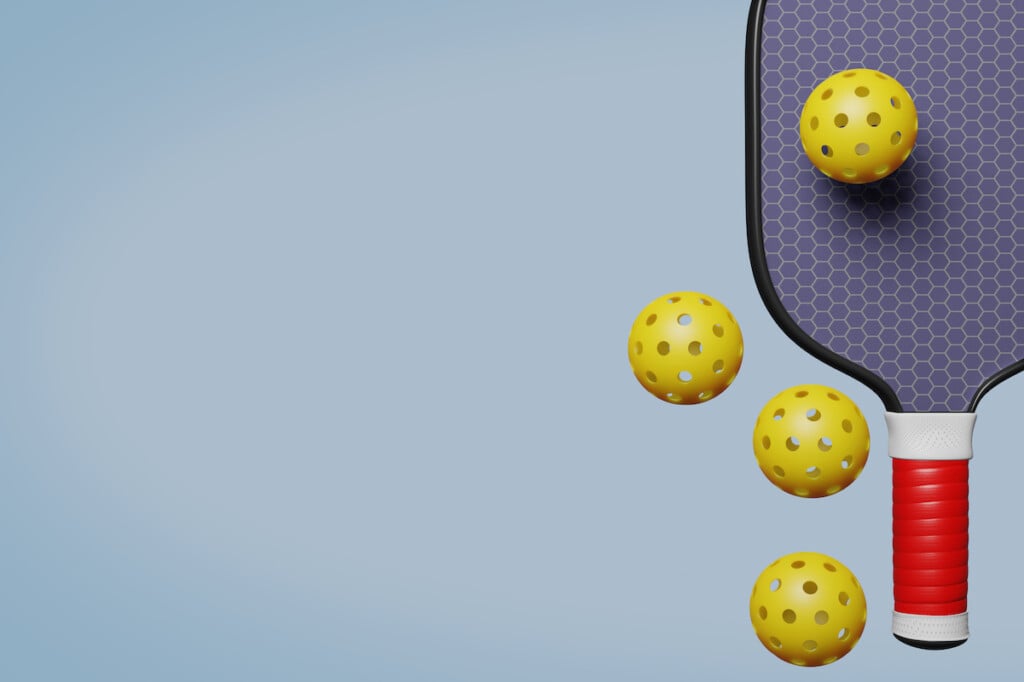Serious injuries resulting from this up-and-coming sport aren’t too common. Still, an orthopedic surgeon from Cooperman Barnabas Medical Center shares his tips on typical pickleball-related injuries and how to prevent them.

 Ready to hop on the pickleball bandwagon? This sport, which combines tennis, badminton and ping pong, is rising in popularity, and is currently played by more than 36.5 million people across the United States, according to a January 2023 report by the Association of Pickleball Professionals. And it’s an especially huge trend with seniors, as it’s a great way to get in some low-impact exercise (and to socialize with friends and neighbors!).
Ready to hop on the pickleball bandwagon? This sport, which combines tennis, badminton and ping pong, is rising in popularity, and is currently played by more than 36.5 million people across the United States, according to a January 2023 report by the Association of Pickleball Professionals. And it’s an especially huge trend with seniors, as it’s a great way to get in some low-impact exercise (and to socialize with friends and neighbors!).
Here, Raphael Longobardi, M.D., an orthopedic surgeon specializing in sports medicine and athletic injuries at Cooperman Barnabas Medical Center (CBMC) and a member of the RWJBarnabas Health Medical Group, discusses common pickleball-related injuries in the upper extremities, how to minimize your risk and treatment options if symptoms persist.
What are the most common pickleball-related injuries you see in your practice?
Typically, there are a lot of overuse injuries with pickleball. The most common two are lateral epicondylitis, or tennis elbow, and shoulder rotator cuff tendinitis. The differences in the weights of the balls, similarly to the different tensions on tennis racquets, creates a strain on the wrist extensors that can lead to these injuries. The most common lower extremity injury is ankle sprain, where you end up shifting laterally and rolling your ankle.
Who is most at risk for these injuries?
A lot of pickleball players are over the age of 45, so the issue with increasing age becomes flexibility. If you’re stiffer in your joints, you’re going to have an increased chance of muscle strains.
How are these injuries treated?
Usually, it’s a combination of rest, rehabilitation and oral anti-inflammatory medication, depending on the severity and how long symptoms last. Sometimes people get injured and play through [the pain], thinking it’ll resolve in a week or so. You can always start with the RICE technique (Rest, Ice, Compression, Evaluation) and see if it gets better. If not, then come get checked out.
What do you say to people who are injured or in pain from playing sports but may be resistant to seeing a doctor?
Here’s how I look at it: You have a sore throat; you decide you’re going to sit this one out and it goes away on its own, so you don’t need to go to a doctor. If it gets worse after a few days or you have a fever, then you’re thinking you should go see a doctor because it could be something more serious. You need to feel like you need to go see someone because the treatment you’re doing at home isn’t working. Our purpose as sports medicine doctors is to help people return to a level of activity that they haven’t been able to return to on their own.
When is surgery required for a pickleball injury?
Surgery for pickleball injuries is rare because there’s not a lot of overhead serving involved with this sport. But the older age group tends to have overuse injuries of the shoulder that may lead to surgery. For chronic lateral epicondylitis (tennis elbow) that doesn’t respond to conservative measures with oral or injectable anti-inflammatory meds and rehabilitation, then those sometimes require surgical treatment.
How can we prevent pickleball injuries?
Injury prevention for any sport starts out with being in good physical condition. This means being mobile, flexible and strong. That really is the No. 1 recipe for preventing overuse injuries.
Are there any specific warm-ups you recommend that can reduce the chance of injury?
Try a dynamic hamstring stretch, a core stretch or a quad stretch with high knees. You’ll also want to stretch your upper extremities with some shoulder and wrist stretches.
In general, how do you treat sports-related injuries at your practice?
I’ve been doing sports orthopedics for 27 years. The first thing with any treatment is looking at the injuries, what physical demands the patient has and what they’re looking to accomplish. It’s addressing the issue with respect to their recov-ery, their expectation and when they want to return to play. A typical overuse injury can take about 2 to 4 weeks to resolve with rehab and anti-inflammatories.
How do you work with the multidisciplinary team at CBMC to treat common sports injuries?
We have a team of great people here. If a patient needs rehab, we send them to physical therapy. If they need surgery, they’ll come see me. Each member of our orthopedic sports medicine team is equally trained and has experience in these types of injuries. If you have questions or problems, get in touch. This is what our department excels at.
To schedule an appointment with an orthopedist at Cooperman Barnabas Medical Center, call 973-322-7005 or visit our website.